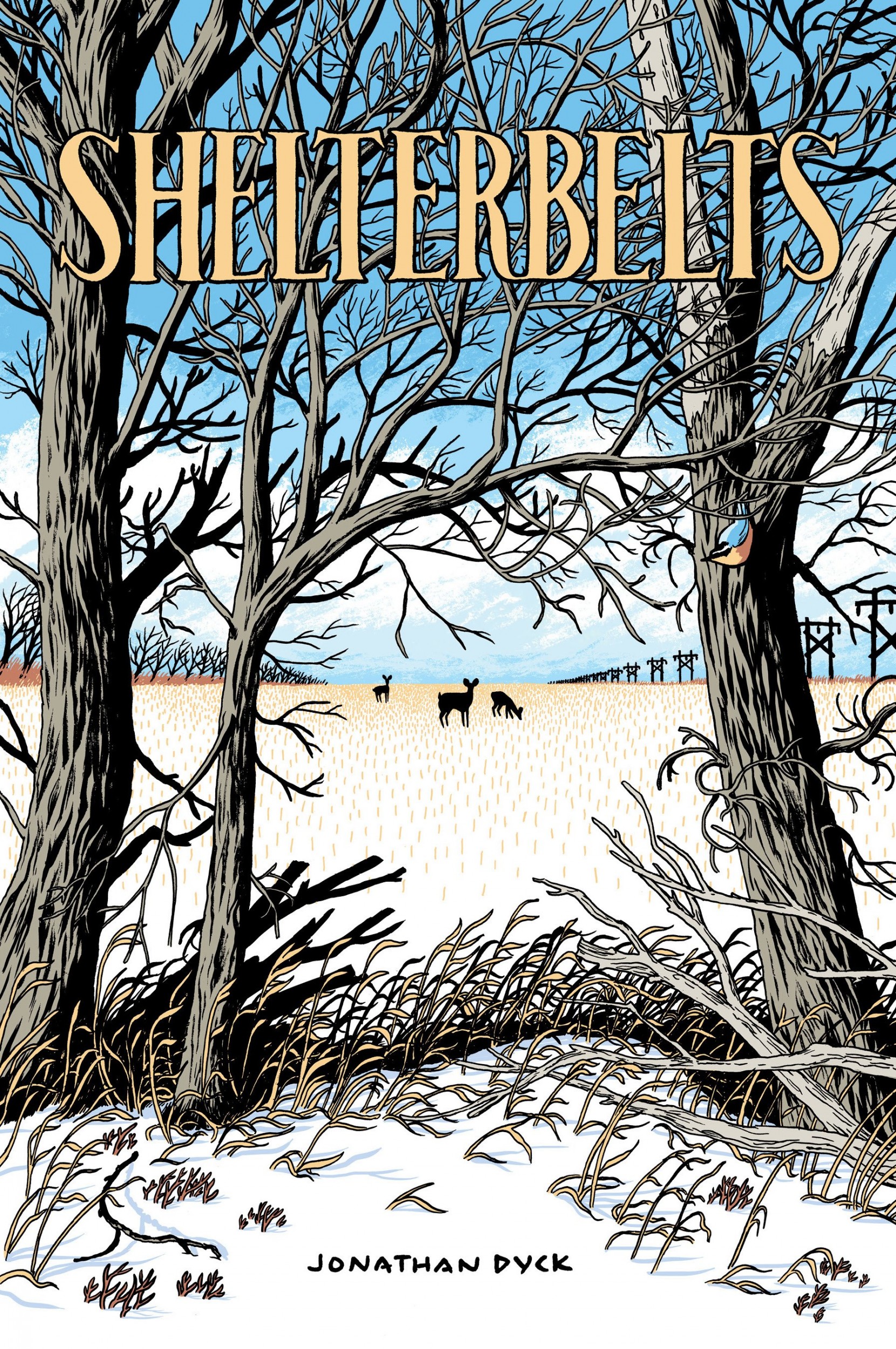News and Releases

Alumni Profiles
Unraveling the modern Mennonite story, one panel at a time
Monday, July 24, 2023 @ 11:39 AM | Alumni Profiles
 Jonathan Dyck (CMU '09), winner of the McNally Robinson Book of the Year award at the 2023 Manitoba Book Awards.
Jonathan Dyck (CMU '09), winner of the McNally Robinson Book of the Year award at the 2023 Manitoba Book Awards.
You may think that most books about Mennonites wouldn't dare to begin with young adults drinking, smoking, and driving a car in donuts around a church parking lot, but author Jonathan Dyck isn't so sure.
Dyck (CMU '09) is the author of the award-winning graphic novel Shelterbelts, which explores themes of Queer identity, inclusive churches, the history of reconciliation with Indigenous peoples, and much more, all set in the fictional, sleepy Mennonite community of Hespeler.
Having recently won the McNally Robinson Book of the Year award at the Manitoba Book Awards, Dyck sat down to chat about all things Shelterbelts.
"There is a very rich tradition of Mennonite literature that is all very edgy," explains Dyck reflecting on some of the sensitive subjects in Shelterbelts, such as the novel's opening. "More and more, as I worked on this, I realized I was not doing anything new."
Writers like Di Brandt, Rudy Wiebe, and Miriam Toews are all a part of an intentionally transgressive Mennonite art form that Dyck says is "incredibly rich and deep and powerful."
Through this history, Dyck says he gained the confidence to mine his own experiences and tell his story and the broader story of his southern Manitoba hometown.
Told from the point of view of many different characters, Shelterbelts looks at the modern Mennonite experience with deeply sober reflections, lifting the rug to see what has been swept underneath.
What's so special about Shelterbelts is its ability to address the complexities and, at many points, hypocrisies of the town's inhabitants while, at the same time, never demonizing or disregarding their perspective. Dyck says that was important to him as the narratives developed and initial concepts took shape.
After years of living in Edmonton, then Montreal, he hesitantly returned to Manitoba. "I knew that world was going to swallow me up," he says.
"I didn't know what [moving back] would mean for creatively," says Dyck. "But I had this sense that the kinds of stories I felt I could tell or were important to me would actually require me to move back."
A larger sense of family history and identity brought Dyck back home, but once home, he says it became impossible to ignore the history of colonial settlement on the prairies. "We're still benefitting from our history on the land, and I wanted that theme to cut through all these stories," says Dyck.
Shelterbelts sometimes portrays this implicitly and sometimes explicitly, such as in the chapter titled Paper Bird. In this, 20-something Rebecca takes a weekend trip to Hespeler with her partner Jason, a Métis bike mechanic in the city. During the drive out, Jason says, "My family used to take me on day trips out here when I was a kid. We'd visit this site where my parents used to live." Later, in a conversation with Rebecca's mom, Jason says, "My relatives were forced out when Mennonites arrived. But some stayed. It's clear Canada had its own agenda for this area."
In many ways, says Dyck, Mennonites are still on the long path to reconciliation but believes "the way we build better relationships is to think about our relationship to place."
Associate Professor of English at CMU, Sue Sorensen says Dyck is a "rare beast that understands the world of words and the visual world equally well," says Sorensen. "The result is that Shelterbelts is an unusually nuanced and insightful graphic novel – and really, it's linked short stories. Jon often places little clues within the pages that indicate what might happen next, but often it's up to the reader to take the story forward."
From sitting on the CMU Press advisory board to teaching an "Introduction to Comics" course this upcoming semester, Dyck remains deeply connected to the institution. Sorensen says, "Jon is super hard-working; he's passionate about everything he does."
"Importantly, I also think his illustrations are just plain beautiful."
Shelterbelts tackles many diversified themes within a complicated rural community. It's the Mennonite story, but one that refuses to rose-tint past or present. Ultimately, however, the novel recognizes the shared values of hope and empathy as the path to understanding and building a more equitable world.
"All of this stuff was swirling around me when I was writing the book, and in many ways, all still is," says Dyck. But he emphasizes, "At the end of the day, you still have to find ways to get along with your neighbours."
Shelterbelts is locally available at CommonWord on the CMU campus and at McNally Robinson.
KEYWORDS: alumni profile, alumni news, alumni, Jonathan Dyck, Shelterbelts


 Print This Article
Print This Article